Top 8 Studio Headphones Under $500 – High End Performance At Your Fingertips
We may also earn commissions on purchases from other retail websites.
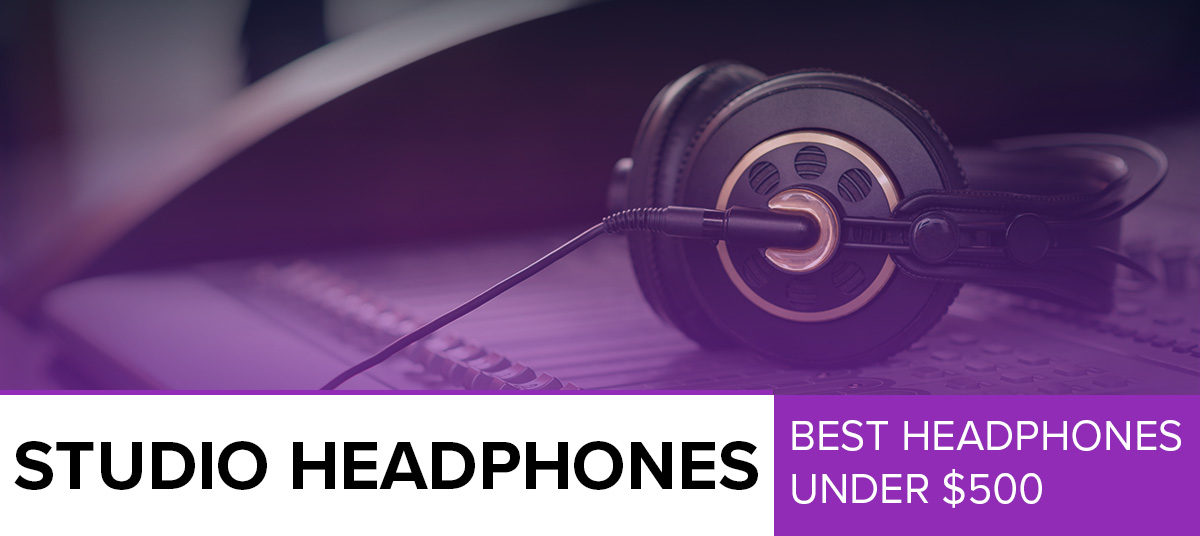
Last Updated: September-19-2018
In this high-end section we were pleased to see all our existing recommendations were still valid. So, in our recent refresh, we took the opportunity to add to our list. We featured two excellent pairs of IEMs – the ER4SR from Etymotic Research and the Audio-Technica ATH-E70 – as well as the over-ear AKG K702s.
Welcome to the high end of studio headphones! Sure, you can spend up to $4,000 (and more!) on some exceptionally premium pairs, but this is overkill for most people – even professionals. Rest assured that, as you reach around $500, you know you are going to end up with a pretty sensational pair of cans that will prove a perfect partner for critical listening of any kind.
We have put together this chart to highlight some of our favorite pairs of phones in this high-end range. Stick around after the chart for our take on what to expect and look out for when investing this kind of money.8 Best Studio Headphones Under $500
| Image | Studio Headphones / Rating | Summary | Check Price |
|---|---|---|---|
+ -  | Shure SRH1840 Total of 4.88/5 | One of the absolute best open back headphones out there right now. | |
+ -  | Sony MDR 7520 Total of 4.80/5 | A professional set that has proven its worth numerous times by now. | |
+ - 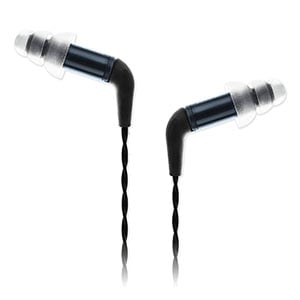 | Etymotic Research ER4SR Total of 4.80/5 | A stunning new iteration of a legendary high-end IEM. | |
+ -  | Shure SRH1540 Total of 4.88/5 | Closed back member of a very successful series of professional studio headphones. | |
+ -  | Focal Spirit Professional Total of 4.83/5 | A somewhat different but ultimately refreshing take on high end studio monitoring. | |
+ -  | Ultrasone Performance 880 Total of 4.80/5 | Advanced features and solid hardware make these among the more capable ones. | |
+ - 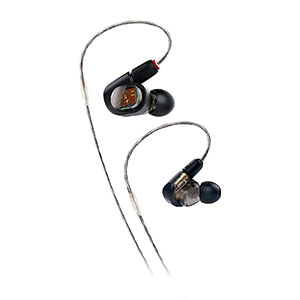 | Audio-Technica ATH-E70 Total of 4.68/5 | Quality critical listening from this pair of lightweight IEMs. | |
+ - 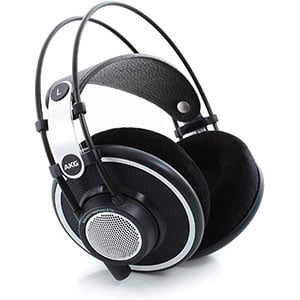 | AKG K702 Total of 4.67/5 | Big comfort and spacious sound from this stylish open-backed pair. |
Shure SRH1840
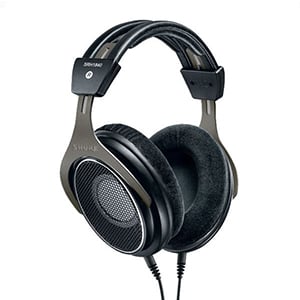
| Design: |  |
| Features: |  |
| Performance: |  |
| Value: |  |
Shure's main forte were always microphones. At least that is what most people know them for. As it turns out, their line of high end studio headphones is about as impressive.
Shure SRH1840 are open back set that offers one of the best performances out there at the moment. The amount of definition, transparency and clinical spatial clarity is nothing short of amazing. On a closer look, it becomes apparent that Shure didn't skimp out on anything.
Build quality is rock solid with a frame made of aircraft grade aluminum. You also have velour ear pads and a headband that is sleek but highly comfortable. Overall, a highly refined model that pretty much checks all of the right check boxes.
Sony MDR 7520
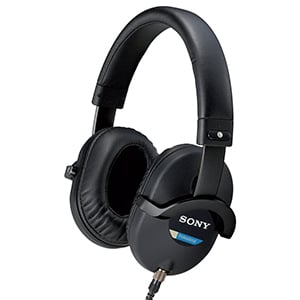
| Design: |  |
| Features: |  |
| Performance: |  |
| Value: |  |
When it comes to professional studio headphones, Sony is one of the few brands that is capable of delivering solutions that meet the current requirements. Their MDR 7520 is one of the best examples you can find.
These headphones are simple, rugged and optimized for performance above anything else. With that said, the comfort is impressive despite them using pleather instead of some more popular materials often seen in the high end segment of the market.
If you look closely, you will notice that just about every component and element of MDR 7520 is engineered to perfection. That is exactly the type of attention to detail that you want to have in a set of professional, high end studio headphones.
Etymotic Research ER4SR

| Design: |  |
| Features: |  |
| Performance: |  |
| Value: |  |
The name Etymotic Research should be familiar to experienced audiophiles as the brand introduced the groundbreaking ER4 more than 30 years ago. In 2018, their modern iterations – the ER4SR – prove as valuable to critical listeners.
Crafted in America, with a simple lightweight design and an array of 3-flange and foam tips, the ER4SRs offer an excellent build and fit – with an equally great sound.
With balanced-armature, precision-matched, custom-tuned drivers, the sound is very smooth and clear with an incredibly flat response that’s perfect for critical listening. You can read more on the Etymotic Research ER4SR in our full review!
Shure SRH1540
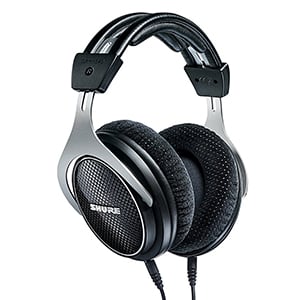
| Design: |  |
| Features: |  |
| Performance: |  |
| Value: |  |
Shure's SRH series of headphones has caught some by surprise. SRH 1540 is the flagship closed back model in the series, making one of the most competitive sets of headphones of its type on the market.
These pack two very well balanced 40mm drivers with plenty of range and even more definition. However, Shure SRH 1540 is much more than that. Frame design, padding, aluminum forks, all come together to form a very enticing package for any professional.
Despite being rather bulky, Shure has managed to design a suspension system that makes them almost unnoticeable. Needless to say, SRH 1540 is a perfect companion for long days where comfort is an absolute necessity. Overall, an awesome set of studio headphones.
Focal Spirit Professional
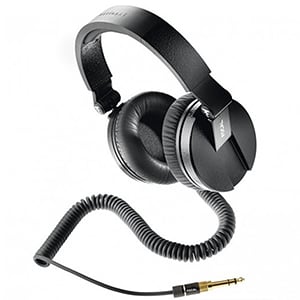
| Design: |  |
| Features: |  |
| Performance: |  |
| Value: |  |
Focal's track record is pretty great when it comes to studio monitoring equipment. Even though that mostly applies to their speakers, Focal's headphones department is nothing to joke about either. The model we are looking at here, Focal Spirit Professional, is actually one of the best in its class.
Everything revolves around its awesome drivers that bring a very refreshing performance to the table. When you add a low profile design with efficiently laid out padding, you pretty much have a package that is worthy of any professional studio.
The main question is how do these fare against their direct competition. As it turns out, Focal Spirit Professional is easily up there with the best there are at the moment.
Ultrasone Performance 880

| Design: |  |
| Features: |  |
| Performance: |  |
| Value: |  |
Ultrasone has taken a different approach at building professional studio headphones. While other brands often times implement proprietary tech, Ultrasone is one of the rare ones which have really commuted to the idea.
Performance 880 brings very solid hardware, both in terms of drivers and actual hardware. On top of that, you get an interestingly unique frame design with that looks awesome but also offers lots of versatility. Last aspect that really ties the whole thing down is comfort.
Ultrasone has managed to find a good balance between padding and aesthetics where you get the necessary comfort without covering the entire headband with padding. In essence, these might have a rather deceptive appearance but make no mistake, they're highly capable.
Audio-Technica ATH-E70

| Design: |  |
| Features: |  |
| Performance: |  |
| Value: |  |
We arrive at another IEM set on this list, and another pair that certainly stands up to traditional headphones in terms of comfort and sound quality.
At just 9g, the Audio-Technica ATH-E70s are very lightweight, but durable and – combined with a wide range of both silicone and foam tips – comfortable for long studio sessions. With excellent sound isolation and a clean, flat response, these IEMs are perfect for monitoring in the studio and on the go.
We have more on this high-end pair of critical listening in-ear phones in the complete Audio-Technica ATH-E70 review. Check it out!
AKG K702

| Design: |  |
| Features: |  |
| Performance: |  |
| Value: |  |
From AKG, the K702s prove a very impressive pair of open-backed phones for monitoring and mastering – providing you don’t take them out of the studio.
Made in Austria, it’s a stylish and extremely comfortable pair – well-built with a genuine leather headband, velour-covered 3D foam ear cups, and an all-round aesthetically-pleasing design.
Loaded with AKG’s patented Laminate Varimotion diaphragms and flat-wire voice coils, there is a very open, spacious and natural sound to these – not ideal for the casual user, but a great option for the critical listener. There’s more on this pair in the full AKG K702 review.
Are $500 Headphones Really Worth The Investment?
To answer this question, the first thing you must figure out is whether you actually need a set of studio headphones at such a high-end level.
Many people will tell you that, when it comes to anything related to audio gear, you should buy the best you can afford – therefore, buying the very best studio headphones on the market makes sense. So, if you are a professional or a very-keen audio mixer/producer, and can afford $500, then go ahead – spend the money!
What about beginners? Of course, learning to mix with a set of $500 cans will be a better experience than learning with, say, $100 studio headphones, although if you are only just beginning, think twice about spending as much as $500. If you are just starting out, a high-end pair will probably be overkill. It is only as your experience and knowledge grows that you will start to really appreciate what a high-end set of headphones can offer.
In terms of whether the hardware and performance of $500 headphones is worth the investment (regardless of your level of experience), we would say yes. While it might not be immediately apparent, there is a good reason why these headphones are as expensive as they are. You are looking at better hardware, better design, better features and better performance compared to cheaper phones. Let’s break these down into individual sections.
Hardware
The hardware difference between cheaper headphones and more high end ones is obvious from a distance. Where most affordable models pack a set of pretty ordinary drivers, investing a bit more money will get you individually matched, custom voiced drivers with advanced membrane designs. Then we have voice coils and the way they are made. All of these things have a significant impact on the performance of your headphones. Moving on to the cable, most high end models come with double ended cables, each going into one driver. These are usually quality made, oxygen-free copper core cables that prevent all kinds of interference.
The actual sub frame of the headphones falls under hardware as well. There are too many headphones out there with actual potential, which are ruined by weak frames and structure in general. When you have high quality aluminum spanning through the entire headband and forks, you just know that those headphones are made to last. Does that mean that composite materials are unacceptable? Not at all, but there is a difference between high end ABS and brittle, cheap plastics.
Advanced Features
Here's where we get to really interesting stuff. In lower segments of the market, brands rely on the drivers alone to deliver the performance. Stepping into the major leagues changes that to a point. Once you are paying big money for your headphones, you will often find that brands include a number of proprietary technologies in order to compliment or boost the performance of their hardware. Exactly what type of tech you will run into depends on the brand you go with and the specific model of headphones. In most cases, the effects of these features will be overwhelmingly positive.
Moving on to less significant features, we have backup ear pads, protective cases or bags and similar. It is only normal to expect this type of stuff when you are spending this type of money. With that said, any additional features shouldn't really be the deciding factor in your choice. Most of these things can be acquired for just about any pair of headphones out there. Still, those are all things that are cool to have.
Performance
As always, performance is what it's all about at the end of the day. With high end studio headphones, you have a choice. You can either go with high impedance models that will reach their peak performance only when plugged into a good amplifier, or a low impedance set. Each of these has their pros and cons which should be factored in your decision making process. For example, if you are someone who travels often and has to work on the go, low impedance headphones might be a much better solution for you. On the other hand, if you are mainly working from your studio, having that high impedance could be the right way to go.
When it comes to transparency, things get a bit more difficult. Before we get any further, let’s just say that almost all headphones in this segment of the market will be flat enough for mixing as well as recording music. There will, however be some differences based on your choice of headphones. Closed back headphones are usually more transparent than open back ones. On a similar note, open back headphones sacrifice some of that transparency on account of spatial definition and clarity.
After all, having a well defined sound stage is imperative for certain genres of music. As overwhelming as all of this sounds, having the option to fine tune these preferences is exactly what makes high end headphones so attractive.
The Final Word
Ultimately, high-end studio headphones are tools before anything else. What kind of tool you will need is something only you will know. We have shown you what we consider to be some of the best choices in this price range and it is safe to say that any of the headphones we’ve mentioned today will work very well in the studio no matter what.
Making the leap into these waters can be intimidating, but as long as you know what you want in terms of build, performance and comfort, you should end up with a perfect partner for long hours in front of a mixing desk.



Reader Interactions